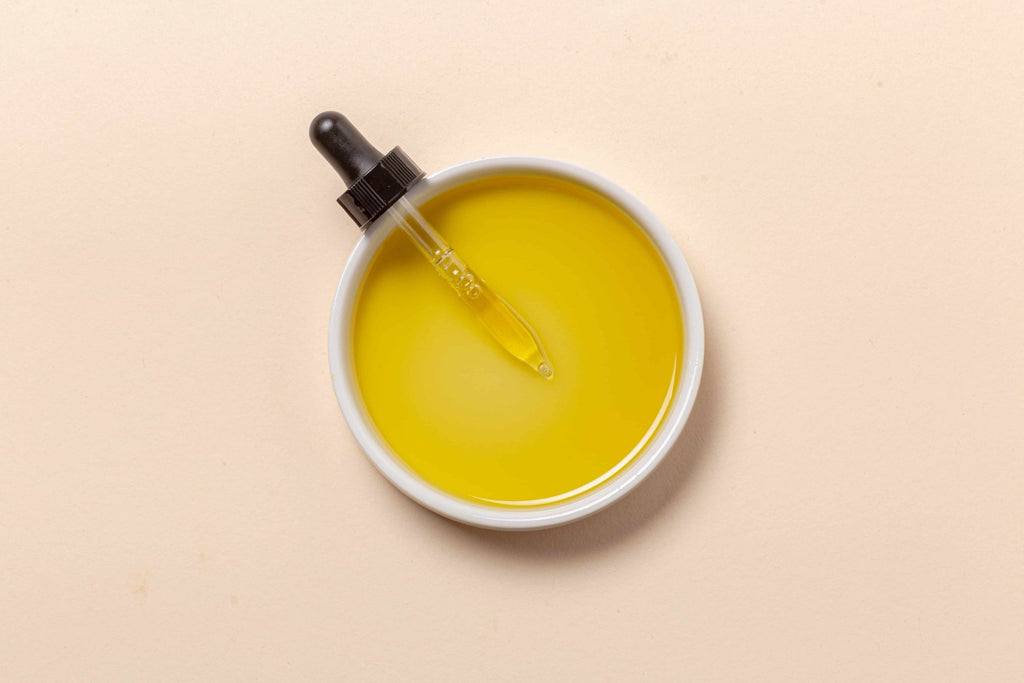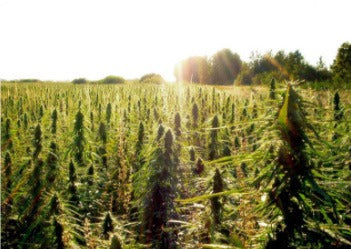Cannabinoids 101: THC vs. CBD

THC vs. CBD: When many first learn about hemp-derived CBD, they automatically compare it to THC. This makes sense, because of the 100+ cannabinoids that have so far been discovered in the cannabis plant, THC and CBD are the most popular and abundant.
THC tends to be the cannabinoid most people are familiar with because of its intoxicating reputation. As widespread as the use of CBD has become, it’s still a very recent mainstream phenomenon. While there’s no denying that CBD has become America’s cannabinoid of choice, countless people still wonder what makes THC and CBD different.
What’s the Difference Between THC and CBD?
Yes, both THC and CBD come from cannabis. The two cannabinoids also contain the same chemical composition. However, when it comes to the way they interact with the body, the extracts have some very distinct and important differences.
CBD Doesn’t Get You High

One of the biggest differences between THC and CBD is that CBD doesn’t have an intoxicating effect. This is a factor that many people are concerned about when looking into CBD products.
Most people automatically think about the intoxicating effects associated with cannabis whenever hemp is brought up. However, THC is the only cannabinoid that will have these euphoric effects. CBD on its own is non-intoxicating and doesn’t get you high. If you want to avoid mind-altering side effects, always make sure your CBD products are lab tested and 0.0% THC.
THC, CBD and the Endocannabinoid System
The differences between THC and CBD all come down to the way they interact with the endocannabinoid system, particularly the CB1 receptors, which are predominantly found in the brain and central nervous system. THC binds to and activates CB1 receptors, which in turn makes a person feel “high.” It’s suggested that without CB1 receptors, cannabis wouldn’t cause intoxicating effects at all!
On the other hand, CBD has little to no binding affinity for CB1 receptors. This is why CBD does not cause psychoactive effects.
What exactly is going on in your brain to make you feel “high” when you consume THC, though?
Think of it like this: THC has a structure very similar to the endocannabinoid anandamide, also known as the “bliss” molecule. When THC binds to CB1 receptors, the brain releases even more dopamine than anandamide normally would. This ultimately leads to the high that THC is famous for.
According to the National Institute on Drug Abuse, this is how marijuana makes you high:
THC stimulates neurons in the reward system to release the signaling chemical dopamine at levels higher than typically observed in response to natural stimuli. This flood of dopamine contributes to the pleasurable “high” that those who use recreational marijuana seek.
CBD Is Typically Extracted from Hemp, THC Is Found in Marijuana

Hemp and marijuana are the two most well-known subspecies of cannabis. THC and CBD are found throughout the leaves and flowers of both. One of the biggest differences, however, is the percentage of cannabinoids each contains.
THC is naturally abundant in marijuana strains. Hemp is often bred to be high in CBD but not THC. The majority of CBD products available online and at retailers throughout the US are sourced from hemp, as it contains less than 0.3% THC.
What About High-CBD Marijuana Strains?
There are marijuana strains that are cultivated to contain a high percentage of CBD. Typically only available in states that have passed medical or recreational marijuana laws, these marijuana strains with a high CBD/low THC profile are becoming more and more popular.
As far as high-CBD marijuana strains are concerned, the greater the CBD to THC ratio, the less likely you are to experience strong psychoactive effects. A CBD/THC ratio of 1:1, for example, will likely make you feel “high” while an 8:1 ratio shouldn’t have much of a psychoactive effect. Novice users might feel a slight buzz, but nothing like they would if they were to consume a strain with a 1:1 ratio or an average marijuana strain that contains about 12% THC.
Because hemp contains relatively no THC compared to marijuana, it’s used to create many of the countless CBD products currently available. Note that you’ll only find marijuana strains in various CBD products in states where marijuana is legal.
The Molecular Difference Between THC and CBD

When it comes down to it, THC and CBD have an identical chemical composition. The molecular structure of both cannabinoids is C21H30O2, meaning they each contain 21 carbon atoms, 30 hydrogen atoms and two oxygen atoms. Their molecular mass is also pretty close to identical, weighing in at 314.469 g/mol for THC and 314.464 for CBD.
However, there is a slight difference in the way the two are anatomically arranged. THC is a cyclic ring while CBD is a hydroxyl group. It’s this variation in their anatomical arrangement that’s responsible for the different properties the cannabinoids are known for.
How THC and CBD Work Together
Both THC and CBD have shown to be beneficial on their own, but it’s been widely suggested that the two may work even better together. Many contend that people have been using cannabis for wellness for centuries and that sticking as close to the way nature intended provides the best overall benefits.
The Entourage Effect
In 1998, Israeli researchers Raphael Mechoulam and Shimon Ben-Shabat proposed that the human endocannabinoid system exhibited an “entourage effect,” where various compounds in cannabis increased the activity of the endocannabinoids anandamide and 2-AG.
Cannabis is a plant that contains over 500 chemical compounds––THC and CBD are just two of the 100+ cannabinoid compounds found in cannabis. Terpenes, flavonoids and essential fatty acids are among other important compounds.
The entourage effect suggests that when all the compounds in cannabis are working together (rather than just one isolated cannabinoid) there is a synergistic effect that occurs in the body.
Many experts agree that the entourage effect is indeed a real phenomenon. When it comes down to it, most individuals seem to respond better to cannabis products that are made up of multiple cannabinoids and other plant compounds rather than just one cannabinoid that has been isolated.
Benefiting from the Entourage Effect Without THC
If THC isn’t your thing, you can still benefit from the entourage effect by looking for “full spectrum” or “broad spectrum” CBD products.
Full spectrum CBD is that which contains all the cannabinoids, terpenes, flavonoids and other compounds found in hemp. Full spectrum CBD products generally contain less than 0.3% THC.
Broad spectrum CBD is very similar to full spectrum CBD except that all THC has been scrubbed. Broad spectrum is perfect for individuals who can’t have any traces of THC in their system but still want to experience the benefits of the entourage effect in a CBD product.
THC vs. CBD: they might come from the same plant and share certain similarities, but there are also some key differences between them. All of Joy Organics’ products are made with CBD that is only derived from hemp and is always 0.0% THC. It’s the perfect option for a user who wants to avoid the euphoric effects of cannabinoids entirely.
Still have questions about what makes the two major cannabinoids found in cannabis different? We’re always here to help.
Thanks for reading! To show how much we appreciate you, we’re going to give you 16% off your next order. Just use code READER16 at checkout!

Newsletter signup
Join the Joy Organics Family
Sign up and get updates on new products, as well as special coupons and discounts.
testimonials
What Our Clients Say
“This is a company that truly cares about its customers and providing the best CBD products currently available on the market.”










Join In On The Conversation
Your email address will not be published. Required fields are marked *
Comments will be approved before showing up.